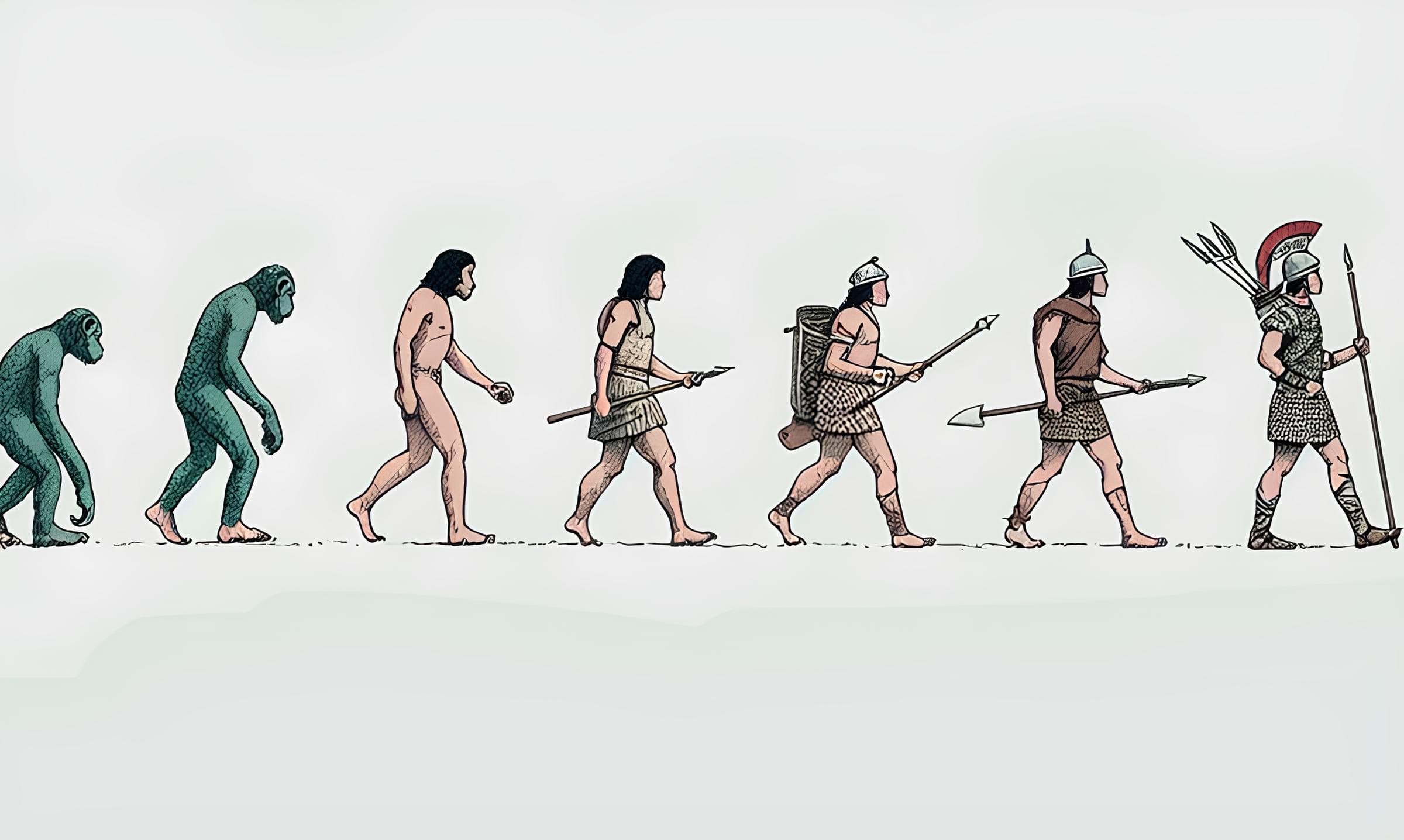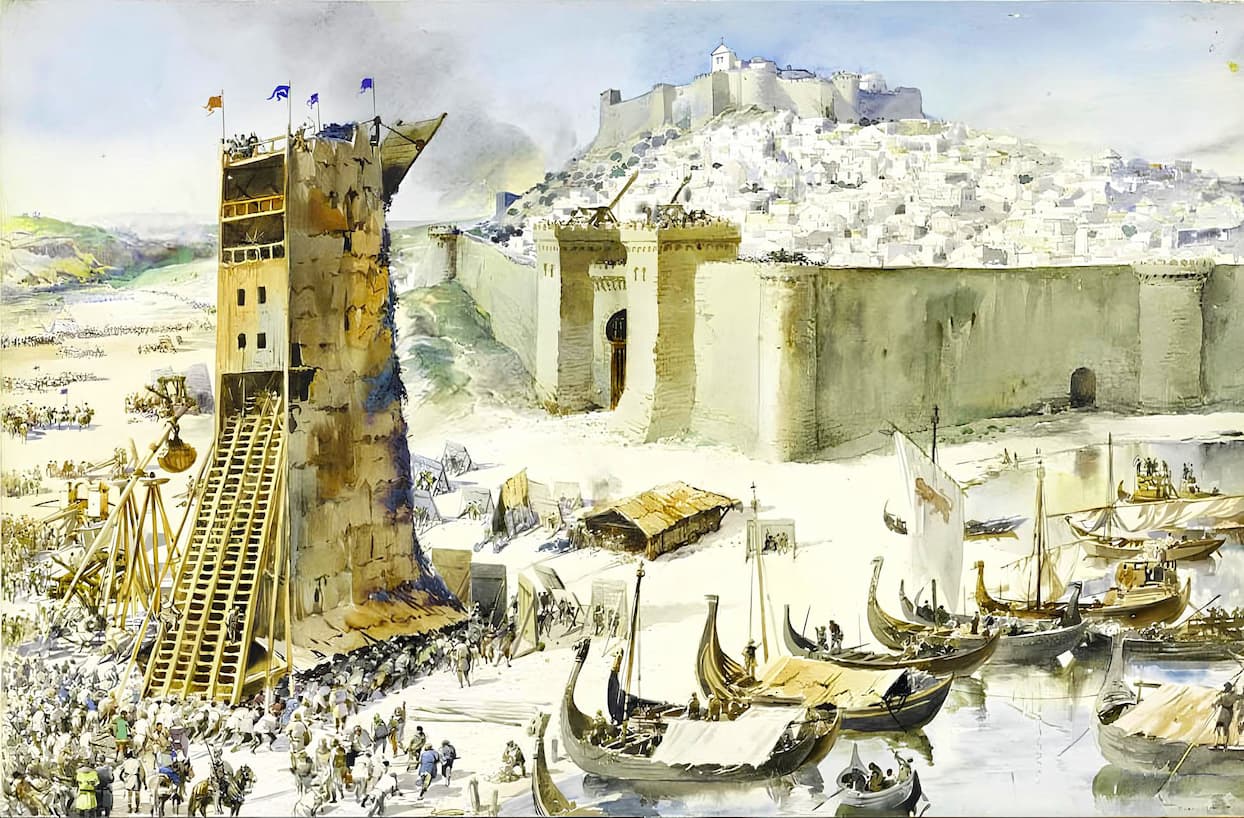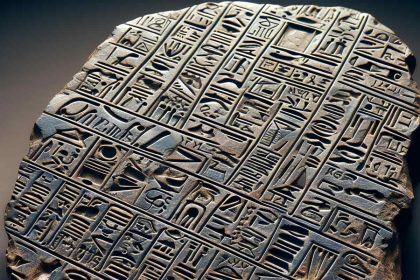One of the first human societies, Ancient Egypt, had been around for a very long time. King Narmer of Egypt united Upper and Lower Egypt before the year 3000 BC. He ushered in a dynasty of pharaohs that ruled Egypt for nearly 2,500 years. The Nile’s frequent yearly floods ensured more bountiful crops, which contributed to Egypt’s and the Pharaohs’ long lifespans and prosperous rule. The river served as the primary north-south transportation corridor, and the vast desert that surrounded it served as a natural barrier against invaders while also providing a source of construction materials and valuable metals. As a result of the Nile’s depletion, Egypt became a desert, and the development of Egyptian civilization was likely prevented. Egypt is a gift from the Nile, as the Greek historian Herodotus put it in the 5th century BC.
- Ancient Egypt, a gift from the Nile
- The beginnings of Egyptian culture
- Pharaoh: ruler, and deity or a god-king
- Ancient Egyptian Empire
- The builders of the Egyptian pyramids
- The Middle Kingdom
- Egypt’s culture was revived after a period of invasion
- The New Kingdom: the golden age of Ancient Egypt
- From the Amarna Period until the Ramesside Dynasty
- Decline of the pharaohs and end of Ancient Egypt
Ancient Egypt, a gift from the Nile

The Nile Valley is 500 miles (800 kilometers) long, beginning at the first cataract of the river near the old Egyptian boundary and ending at the Mediterranean. The Nile rises in the Ethiopian Highlands, much to the south of modern-day Egypt.
Back in Ancient Egypt, the waters of the Nile River were swelled by the onset of summer’s heavy rains, and by the conclusion of the season, it overflowed its banks into Egypt. As the water levels dropped, the floods left behind a damp, silty landscape. The Ancient Egyptians never required flood walls or elaborate water management techniques.
Ancient Egyptians planted their seeds in the fall in the rich, soggy soil, and then allowed the crops to mature in the winter sun. Then, in the spring, they harvested the fields just in time for the next flood. Only when the Nile floods were really bad did the people suffer from famine.
Around the 6th millennium BC (6000 to 5001 BC), farmers established themselves in the Nile Valley. The Sahara, now a huge grassland punctuated by numerous lakes, was formerly cultivable when North Africa was wetter than it is now. The environment started becoming drier and more desert-like about 4000 BC. Some Egyptian farmers became nomad herders, while others settled in the Nile Valley.
The beginnings of Egyptian culture
People living in the Nile Valley had been dividing the country into two distinct parts for thousands of years: Upper Egypt, in the south, along the river, and Lower Egypt, in the north, surrounding the delta. The southern area was guarded by the vulture goddess Nekhbet, while the northern part was guarded by the cobra goddess Wadjet. Both regions also had their own symbols, the lotus and the white crown in the south, the papyrus and the red crown in the north.
When did Egyptian civilization begin?
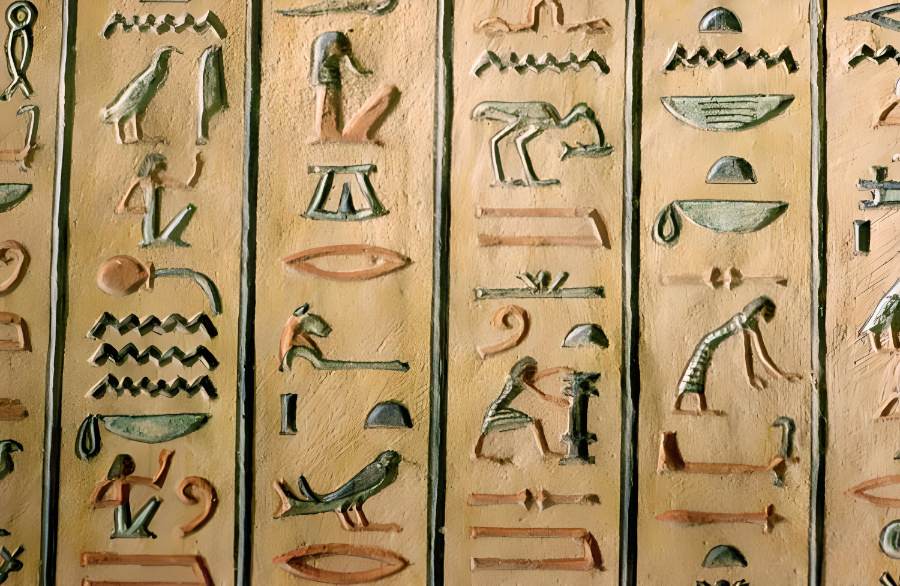
A kingdom developed in the southern area of Upper Egypt just before 3000 BC. It was during this time that the pictographic writing system of hieroglyphics was in widespread use. According to history, Narmer, the first king of Egypt, united the land by leading an army to victory over Lower Egypt. He made Memphis the new state capital due to its central location and strategic importance. Egypt’s successor kings built a robust administration during their time in power. Due to his divine lineage as the son of Ra, the sun god, the king was able to rule for all time.
The documents that have made it down to us have allowed historians to create a thorough list of the royal dynasties that dominated ancient Egypt and the approximate dates of their reigns, which span nearly continuously from 2920 to 30 BC. They did this by creating time eras in Egypt’s history. Following the collapse of the early dynasties (2920–2649 BC), the old empire (2649–2134 BC) saw royal rule expand southward all the way to Nubia. The conflict between competing dynasties (the first intermediate period, 2134–2040 BC) was followed by the reunification of Egypt under the Middle Kingdom (2040–1640 BC).
Pharaoh: ruler, and deity or a god-king
The Pharaohs were the kings and queens of ancient Egypt. The Pharaoh was both a human king and the divine offspring of the sun deity Ra. The Egyptians saw the Pharaoh as the embodiment of the gods, who sent him to Earth to act as a mediator between the gods and humans. The Pharaoh only would become a god after his death if the Egyptians believed he had supernatural abilities, such as the ability to control the Nile’s annual floods.
How the Pharaoh’s authority shaped Egyptian society
During his reign, the pharaoh had unchecked authority since he served as head of state, commander-in-chief of the armed forces, and spiritual leader for his people. Supporting him in his efforts was a strong administration, with the viziers as the show-stopping protagonists. Since this was the case, the pharaoh enjoyed unchecked and consolidated authority.
The many facets of the pharaoh’s authority were represented by his characteristics. He represented national sovereignty by donning the pschent, the twofold crown of Upper and Lower Egypt. The uraeus, the snake symbol of protection, was tattooed on his forehead. The ruler held two scepters (the hook and the whip) as symbols of his authority.
Up to Alexander the Great‘s invasion of Egypt in 332 BC, 31 dynasties of pharaohs ruled Egypt in succession (because the following rulers, i.e., the Macedonian and Ptolemaic dynasties, were not really pharaohs).
Ancient Egyptian Empire
About 2649 BC, a time period known as the Old Empire began. Both the Egyptian kingdom and culture were expected to develop their signature features during this time. The Old Kingdom was the time when ideals were established that would serve as constant touchstones for years, if not millennia, to come.
The notion of divine kingship underpinned the whole of pharaonic Egyptian society. The king, as the reincarnation of Horus and the son of Osiris, acted as both an interpreter and an agent of the life force that kept the universe going. He was the only person responsible for managing the government and the economy. He had ownership of all of Egypt. The peasants, who were deemed to be dependents and were thus obligated to do tasks, did so in family teams overseen by royal authorities. The Old Kingdom monarchy was centralized and bureaucratic, yet it was not an arbitrary system. Power and fairness were always inextricably intertwined concepts.
In the beginning, only the king could attain immortality. When he dies, he becomes like the deity Osiris and watches over his home and the people from above. Therefore, the primary task of Egyptian dynasties was the building of tombs that would stand the test of time and ensure the king’s eternal legacy. The Egyptians led military expeditions against the Nubians, Libyans, and Sinai nomads since the reign of Snefru (about 2625–2601 BC) to acquire the raw materials needed for their great achievements, like wood from Lebanon.
The builders of the Egyptian pyramids
Massive structures began to arise throughout the Old Kingdom. Imhotep, minister to King Djoser, erected the first royal tomb at Saqqara, a seven-tiered structure with rows of stones defining the levels. This huge monument was built to honor a king who, even in death, continues to watch over his subjects.

Thanks to the pyramids of Giza, we know the names of Khufu, Khafre, and Menkaure. The slanting sun rays symbolized by the pyramids’ form let the king’s soul reach heaven after death. For decades, a massive workforce was recruited to create these massive stone monuments.
The Pharaoh was mummified after his death. Mummification, a method that emerged in Ancient Egypt about the 3rd millennium BC, involved drying the corpse to prevent it from decomposing further. The bandage made the body seem nearly alive. In this way, the body would serve as a home for the soul all the time.
The pharaoh’s body was relocated to the pyramid’s central burial chamber. The walls of the chamber were covered with texts and magic formulae, and the luxurious items inside were meant to follow the departed into the afterlife. As soon as the funeral was over, the entrance to the room was blocked up with stones.
The pyramids were not constructed by slaves, as is often believed, but rather by trained artisans with the assistance of idle peasants during the flood season. How the hundreds of massive stone slabs were lifted and stacked one above the other remains a mystery.
Due to the high cost involved, pyramid building was abandoned after the end of the Middle Kingdom. When it came to displaying their riches and authority, the following Egyptian kings favored constructing temples adorned with huge bas-reliefs and sculptures.
The Middle Kingdom
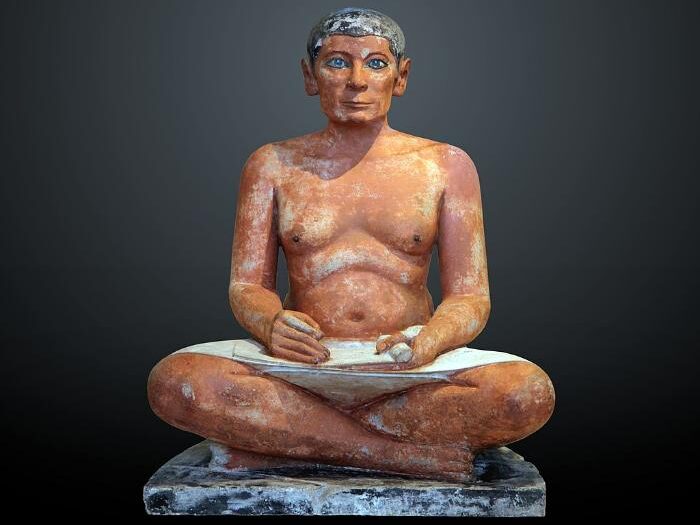
The period between the end of the 7th dynasty and the start of the 6th dynasty, or roughly 2152 BC and 2065 BC, is known as the First Intermediate Period. The invasions caused the region to become fractured, starvation to develop, and rebellion movements to proliferate, all of which coincided with the spread of the religion of Osiris, goddess of agriculture (who also taught mankind the technique of making beer).
In the year 2050 BC, after many years of civil conflict, Egypt was finally reunited under the rule of Mentuhotep II of Thebes. The Old Kingdom’s rigid structure was gradually dismantled and replaced with a more malleable Middle Kingdom governance, beginning about the year 2050 or 1786 BC.
During this time period, a theological compromise was reached with the Theban and Heliopolitan clergy in which Amun was connected with Ra. This was done in an effort to strengthen national unity. Throughout the 2nd millennium, the authority of the Amun priesthood was to be strengthened. Amenemhat I (1991-1962 BC) and Senusret III (1877-1843 BC), kings of the 12th dynasty, worked to reduce regional influence over the central government.
By acting as an intermediary between Amun-Ra and humanity, the pharaoh was able to increase his own authority, decreasing regional feudalism and guaranteeing the continuity of the kingdom during his own reign. Simultaneously, the possibility of eternal life opened up to a wider range of people. From now on, anybody could go there, so long as they adhere to the ritual’s tight guidelines. During this time, scribes reached the height of their power; they were the first real “middle class,” standing between commoners and nobles.
The Middle Kingdom wasn’t more “imperialist” than the one before it, but its kings still wanted to protect Egypt by fortifying its outposts. In the north-east, Amenemhat I had the “Prince’s Wall” built in front of the Bedouins (around 1976 BC); in the south, the high valley of the Nile was annexed up to Semma, beyond the second cataract, at the borders of Nubia. And it was protected by the construction, under the 12th dynasty, of fourteen fortresses that extended from Elephantine to Semna (Nubia).
Amenemhat III (1842–1797 BC) had a massive funerary complex, the “labyrinth” of the Greeks, in the center of the city and constructed and ordered massive works of drainage and irrigation for its expansion.
Egypt’s culture was revived after a period of invasion
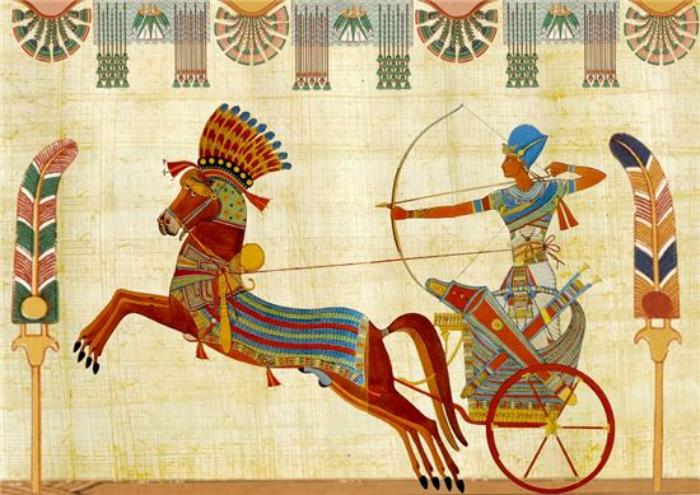
After nearly three centuries of relative stability, the Ancient Egyptians began a period of turmoil known as the second intermediate period (1640–1532 BC). The inflow of Semitic inhabitants from Asia, who had been pushed out by the Indo-European invasions, threatens the stability of Egypt’s government. The Hyksos, who had established themselves in the region to the northeast of the Delta, waited until the pharaohs of the 13th and 14th dynasties fell from power to conquer all of Lower Egypt.
As a result of their military prowess, Egypt was able to acquire horses and chariots. Avaris, the Hyksos’ power hub, enters a new intermediate era as the seat of a 15th foreign dynasty. The Hyksos monarchs followed the Egyptian pharaohs’ example and adopted their cartouche and procedure, as well as Egyptian culture and religion.
Pharaoh: its origins and significance
The southerners put up a fight against the invaders. The rulers of Thebes took it upon themselves to free the land between Elephantine and Abydos. Even though Kamose was successful in his fight against the Hyksos, it was his brother, the Pharaoh Ahmose I, who ultimately expelled the invaders and united the land once more. When he assumed power in around 1552 or 1070 BC, he established the 18th dynasty and the New Kingdom. It was Ahmose who established the New Kingdom and the 18th dynasty (about 1552-1070 BC). It was during this era that the title “pharaoh” first appeared in historical records. This moniker, which translates to “great palace,” was chosen to reflect their prominent position within the administration.
The Egyptians realized that the period of seclusion from which their nation had benefited until the advent of the Hyksos was finished after experiencing foreign occupation. Egypt invested heavily in its military and fought a succession of endless battles for four centuries to secure its position of dominance in the Eastern Mediterranean marine commerce, the control of the Syro-Palestinian ports, and the caravan routes going to Mesopotamia.
The New Kingdom, in contrast to the Old and Middle Kingdoms, was unwaveringly imperialist; it vied with the Mitanni and the Hittites, the other two major nations of the time, for dominance of the Eastern Mediterranean, but it was never victorious.
The New Kingdom: the golden age of Ancient Egypt
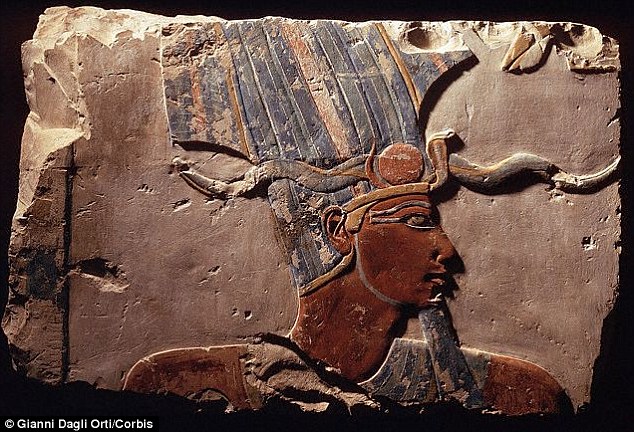
The 18th dynasty (c. 1570–1319 BC) was the height of Ancient Egyptian power and prestige on the international stage (thanks to conquests) and inside the country (thanks to the opulence of the court and the blossoming of literature and the arts; see the Necropolis of the Valley of the Kings). From the time of Pharaoh Amenhotep I (1546–1524 BC), Egyptian forces flooded Syria and reached the Euphrates; however, these early successes were rapidly nullified by local revolts and a dynastic crisis in Egypt (usurpation of queen Hatshepsut, 1503-1482 BC).
In 1482-1450 BC, under Thutmose III, all of the previous conquering efforts in Asia had to be restarted from scratch. This king, the greatest in Egyptian history, commanded no less than eighteen expeditions to Asia during his lifetime. At Megiddo (1482 BC), he destroyed a great Syrian-Palestinian alliance led by Mitanni, then he captured Kadesh on the Orontes (1474 BC), and finally he reached the Euphrates again, completing the conquest of Syria (1472 BC).
Ahmose, during the start of the 18th dynasty, retook control of southern Nubia, which had previously been subjugated to the Middle Kingdom. Expeditions led by Thutmose II and Thutmose III penetrated far into Kush, extending Egypt’s southern frontier to the fourth cataract (before 1477 BC). The New Kingdom’s administrative structure reflected a tremendous amount of regional variation. Once the middle class of scribes and prosperous peasants vanished with the Hyksos invasion, the pharaohs were forced to rely on a body of city officials that was considerably less in number than previously but was hereditary.
Nothing about imperial rule in the conquered nations could be described as dictatorial. When a viceroy was put in charge of Nubia, the region was rapidly and thoroughly Egyptianized. However, the pharaohs in Asia were content with a more lenient regime of protectorates and alliances, which left the local princes in place, and respected the local customs, languages, and indigenous religions. Economic responsibilities (trade contracts guaranteeing Egypt’s standing as a favored country), military obligations (annual payment of a tribute in kind: slaves, ore, horses, war chariots, livestock, timber, oil, etc.), and financial commitments all helped to establish Egyptian suzerainty (each subjugated people had to provide a contingent which served on the spot, under the command of Egyptian officers).
From the Amarna Period until the Ramesside Dynasty
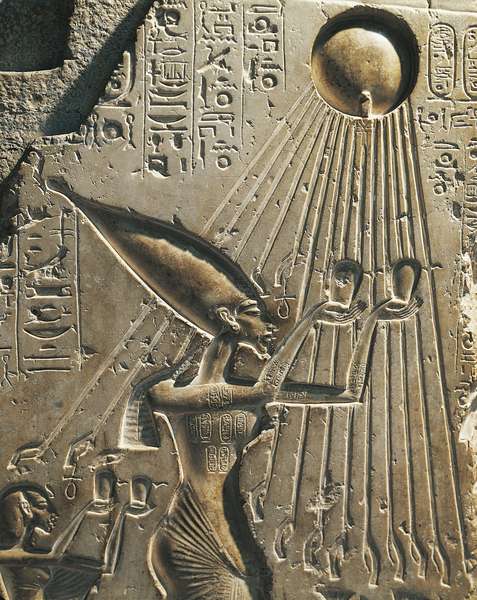
It was under the reign of Amenhotep III (about 1417–1379 BC) that the “Egyptian peace” reached its pinnacle, ushering in an age of extraordinary affluence, luxury, and sweetness of life. The Theban priesthood, however, had not stopped expanding its sphere of authority and land holdings since the New Kingdom’s outset; the high priest of Amun had become something of a de facto second personage of the State.
Amenophis IV (1379–1362 BC) chose to leave the worship of Amun, the deity of his dynasty, and create the pure religion of Aten, the solar disk, as a reaction to this interference and, possibly, also to base the Pharaonic empire permanently on a religion more broadly available to men of all nations. The king, now known as Akhenaten (which means “Splendor of Aten”), and his wife, Nefertiti, relocated the capital from Thebes to the city of Akhenaten (or Amarna in Egyptian).
The Theban priesthood, representing Egyptian particularism, fought back violently against the revolution. Upon becoming king, Tutankhamun (1361–1352 BC), Amenhotep IV’s son-in-law and heir, had to immediately make peace with the Amun priests, return to Thebes, and reinstate the traditions. The crisis not only crippled the Egyptian monarchy outside (the Hittites having replaced the Egyptians in Syria by around 1375 BC), but also severely damaged its reputation domestically. After a period of chaos after the death of young Tutankhamun, the general Horemheb took control (1348–1320 BC) and began the restructuring of the state on the basis of the strictest traditionalism, with the backing of the Theban church, which was more powerful than ever. Egypt’s 19th dynasty (1319–1200 BC) was an attempt to revive the country’s former Asian dominance.
Sometime between 1318 and 1304 BC, Seti I retook southern Palestine. Ramses II (1304–1238 BC) attempted to retake Syria from the Hittites, but was defeated at Kadesh (c. 1300 BC), and subsequent campaigns were fruitless. Finally, in 1284 BC, the Egyptians and Hittites signed a treaty dividing Syria between them, and the treaty was confirmed by Ramses II’s marriage to the daughter of the Hittite king Hattusili III. This meant that the New Kingdom gave up on Eastern dominance for good, but it also brought around forty years of calm, during which classical Egyptian civilization shone its last light (construction of the funerary temple of Abu-Simbel, of the hypostyle hall of Karnak).
Decline of the pharaohs and end of Ancient Egypt
With the threat posed by the Hittites eliminated, the territory now needed to be protected from the Sea Peoples, who were making their way inland from the coasts of Asia Minor and Greece after being pushed out of those areas by subsequent Indo-European invasions and the arrival of the Dorians in the Aegean Sea. Merneptah, son and successor of Ramses II, drove them back.
Because of Pharaoh’s oppression, the Jews decided to escape Egypt and go with Moses to the land that God promised them. The New Kingdom’s collapse started with the death of Ramses III, the second king of the 20th dynasty. After the Assyrians and Libyans destroyed the empire and surrounded it, the priesthood of Amun, led by high priest Herihor, seized authority in Upper Egypt.
Egypt had lost the ability to defend itself against the relentless invasions, notwithstanding brief periods of strength under the reigns of pharaohs Shoshenq I (945-924 BC) and Psamtik I (664-610 BC). The final pharaohs were so badly off financially that they couldn’t even afford a tomb before it was destroyed. From then, Egypt fell under the rule of the Nubians, the Assyrians, and the Persians until finally capitulating to Alexander the Great’s army in 332 BC. The Ptolemies, a family of Greek ancestry, took control of Egypt and established themselves as the ruling dynasty.
Up to the 2nd century BC, Alexandria, the Ptolemaic capital, was a thriving economic and cultural hub. The Ptolemaic empire eventually collapsed due to internal strife, populist uprisings, and battles with the Seleucids. A series of weak monarchs led to the collapse of the Ptolemaic dynasty in the 2nd and 1st centuries BC, when Rome became more involved in the country’s affairs.
Cleopatra was the last and most well-known of the Ptolemaic monarchs. She reigned autonomously at first but eventually received help from Julius Caesar and Mark Antony. After she and her son Ptolemy XIV, Caesarion, died in 30 BC, the Ptolemaic dynasty collapsed and Augustus seized Egypt for the Roman Empire. Incredibly, even the earliest known civilization managed to leave behind a rich cultural and artistic legacy that would be appreciated by future generations.
Bibliography
- Dodson, Aidan; Hilton, Dyan (2004). The Complete Royal Families of Ancient Egypt. Thames & Hudson.
- Strouhal, Eugen (1989). Life in Ancient Egypt. University of Oklahoma Press.
- Manuelian, Peter Der (1998). Regine Schulz; Matthias Seidel (eds.). Egypt: The World of the Pharaohs.
- Aldred, Cyril (1988). Akhenaten, King of Egypt. Thames and Hudson.
- “Chronology”. Digital Egypt for Universities. University College London. 2000.



